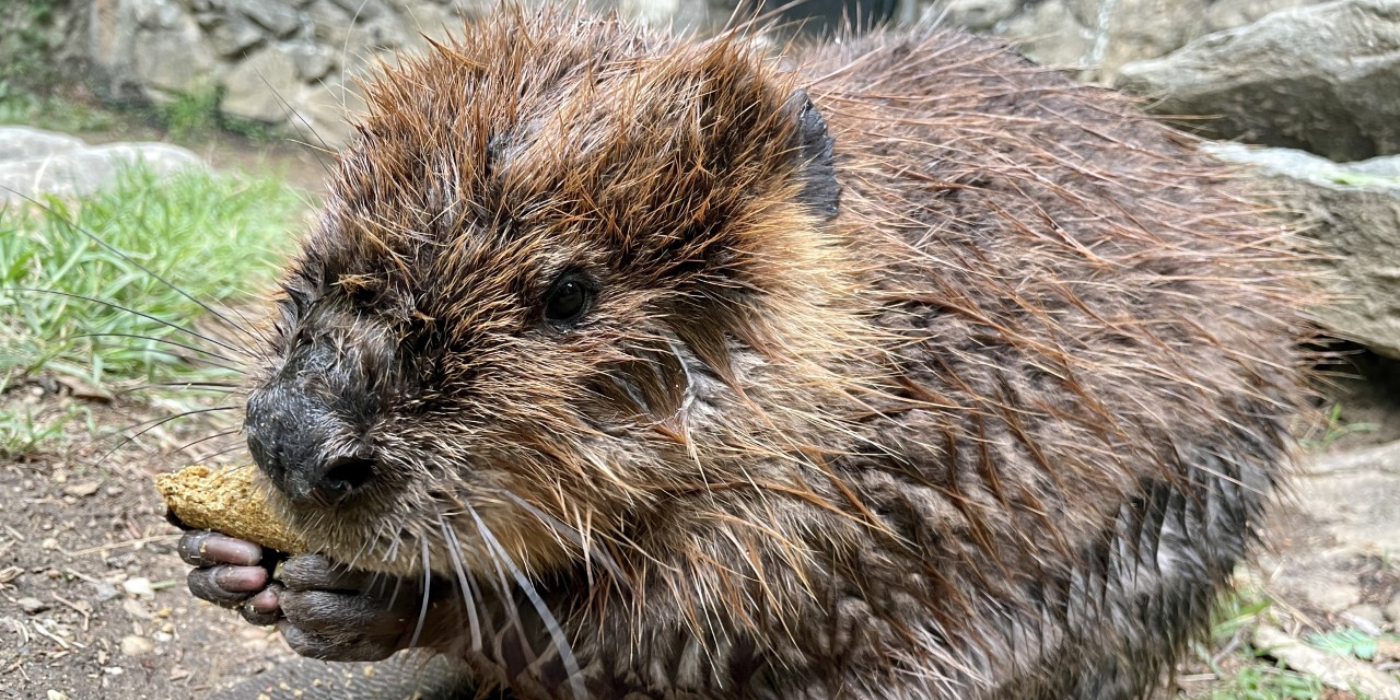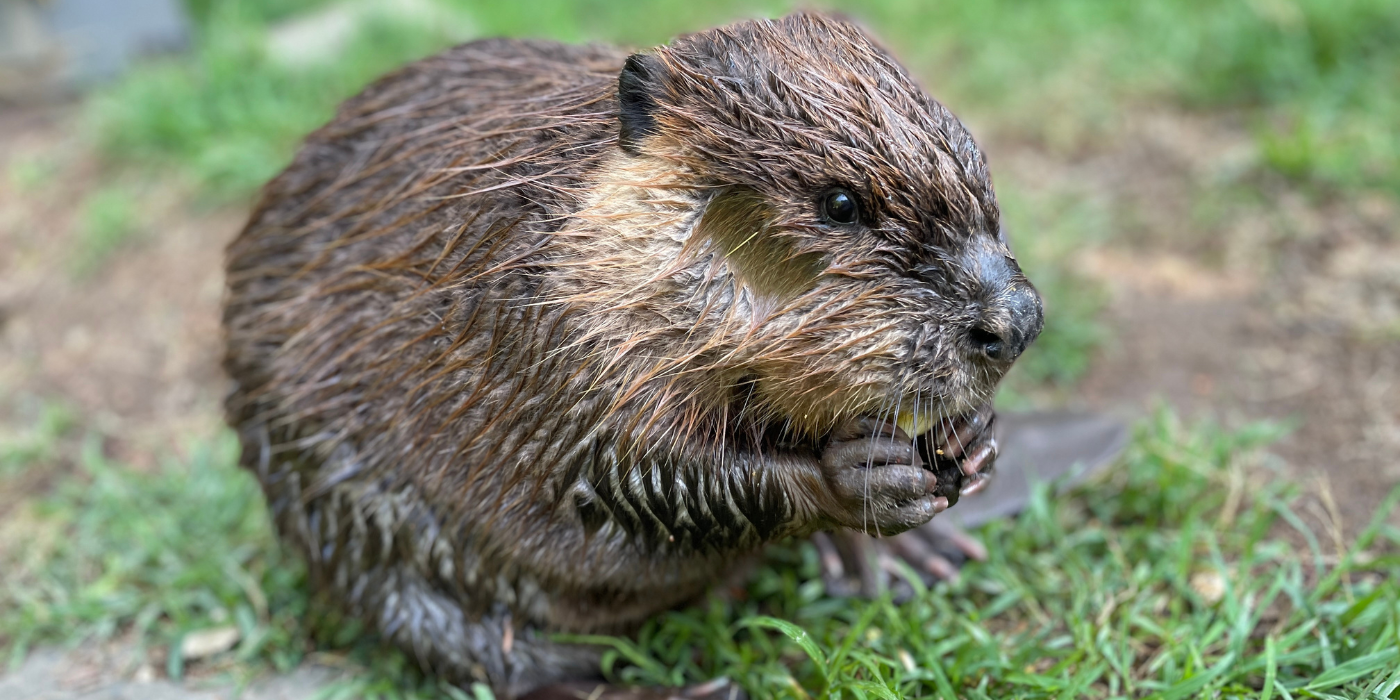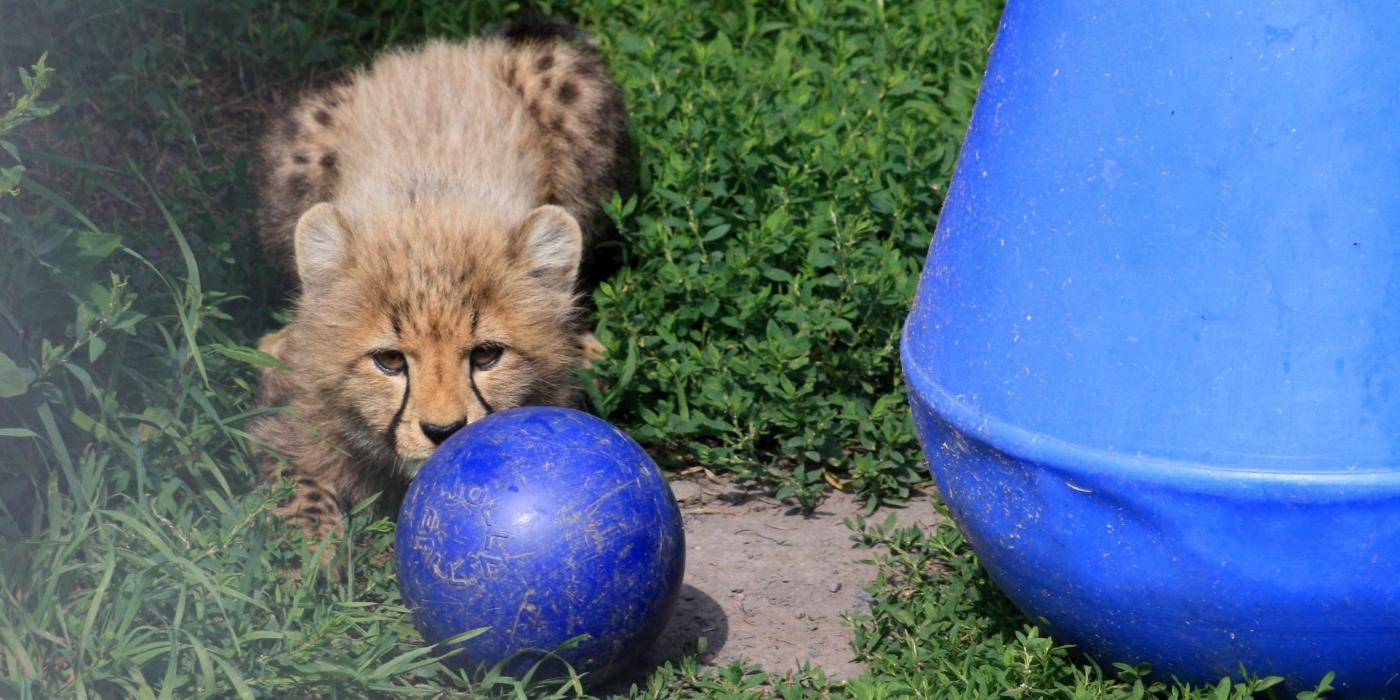New at the Zoo: Meet Beaver Juniper
Our American Trail recently welcomed North American beaver Juniper to the scene. Since April, Juniper has been learning to live with her new exhibit-mate, Aspen. Get to know Juniper in the Q&A with animal keeper Jackie Spicer.
What is Juniper’s backstory?
Juniper came to the Zoo from the Southwest Virginia Wildlife Center of Roanoke, Virginia. She was found at a campground at a very young age. Every effort was made to find her lodge or her family to return her to the wild. Unfortunately, her family was never found. Juniper was too young to survive in the wild without her mother, so the decision was made to hand raise her. Because Juniper spent the first months of her life in human care, rehabilitators determined that it was in her best interest to not be released into the wild.
Because of Juniper’s origins, we don’t know exactly how old she is. But based on her size and when she was found, we think she either just celebrated her first birthday, or will be celebrating soon.
What is Juniper’s personality like?
Since she is still young, her personality will probably change as she gets older. Juniper is very active and curious. She loves to chew on anything we provide her, and you can often see her rearranging the furniture in her lodge throughout the day.
She is also a bit of a foodie! Beavers are herbivores and only eat plant material. In the wild, they use their long claws on their front paws to dig up plant roots of tubers. They have very strong front teeth, which help with chewing and eating wood. Beavers only eat the bark and the first inner layer of a tree, known as the cambium. They will also eat leaves, berries, acorns and other plant material. At the Zoo, we feed the beavers a variety of vegetables, including sweet potatoes, carrots, corn on the cob, broccoli and squash. They also eat two types of pellets: a commercial rodent chow and an herbivore chow. And of course, they get leafy greens and a variety of local browse – woody material they can eat and chew on throughout the day. Juniper seems to enjoy the sweet potatoes most, and then corn on the cob. Both beavers love the chow biscuits we feed them, too.

Juniper is sharing an exhibit with Aspen, the Zoo’s 6-year-old male beaver. How have introductions gone?
One of the reasons Juniper was deemed non-releasable was because she wasn’t raised by or with other beavers. We are slowly working on introducing her to Aspen. Seeing Juniper get the chance to meet another beaver and live with him is something we hope can only increase her wellbeing.
Beavers are social animals by nature, but they can also be very territorial. The beaver exhibit has been Aspen’s home for almost five years—since he arrived from the Detroit Zoo in October of 2018—so he is naturally wary of Juniper. We have been working on feeding the beavers next to each other, with a fence in between. This allows them to see, hear and smell each other, but not touch each other. Keepers have also been switching the sleeping arrangements throughout the introduction process. This lets each beaver spend time in the other’s home, where they can scent mark and move things around. Providing the beavers with time to smell one another and understand that there is no threat can help encourage a positive relationship once they have full access to each other.
Does Juniper have a favorite enrichment item? How does enrichment encourage her natural behaviors?
We haven’t had the chance to offer too many enrichment items to Juniper. Most of her time thus far has been spent introducing her to our exhibit, our staff and to Aspen. However, beavers are naturally destructive, so we like to provide items to encourage that without damaging our exhibit! We try to provide our beavers with a variety of different sized logs and branches to manipulate and cut down to different sizes. We sometimes give them very tall branches, the tallest being around 3-4 feet, so they have the ability to chew it into smaller sizes to move it around and fit it into their lodge. We recently had a mulberry tree removed from an exhibit and placed a large limb in with the beavers.
One human-made enrichment item we offer our beavers is a large boomer ball that is suspended above them. They need to spin it around to get food to drop out of the holes. Beavers have very strong teeth, so whatever enrichment we provide them needs to be indestructible or it must be something they can’t fully gain access to.
What husbandry training behaviors is Juniper learning?
Juniper has been working on scale training and crate training. We weigh all our animals once a week and train most of our animals to voluntarily walk into their own transport crate. As a reward, she gets her favorite foods.
Today, beavers are considered to be of least concern on the IUCN red list.
Why is the beaver’s story so important?
Beavers are a unique species that can be found close to your own backyard. They are the largest rodent in North America and the second largest rodent in the world. They are ecosystem engineers and modify habitat to suit their needs. This will, in turn, create habitat for other species that might not have been able to thrive without the wetland ecosystem created by beavers. Not many animal species do more to modify environments than the beaver.
Beavers are also a great conservation success story. At one point, North American beavers were almost extinct, due to the fur trade and massive habitat destruction as the United States began to take shape. At the turn of the 20th century, most states began enacting conservation protections for beaver populations, which helped their numbers come back to what they are today. This species was on the brink of extinction and their population rebounded thanks to hunting and trapping regulations.

North American beavers like Juniper are a major conservation success story!
How can visitors help wild beavers?
Predators to beavers in the wild include large North American predator species like wolves, mountain lion, and bears. But their main concern is human impact, like habitat loss and human encroachment.
Beavers can sometimes be seen as pests or nuisance wildlife that landowners don’t like to share space with. This is understandable, as beavers can be destructive and have a mind of their own. But that doesn’t mean that they don’t deserve to live their lives just like we do. You can help protect beavers by sharing what you know about the critical role they play in their surrounding environment.
What is one myth about beavers you would like to debunk?
Beavers don’t use their tail to pat down mud and sticks on their dam, like you see in cartoons. Their tail has many uses – they can use it as a support when trying to reach tall branches, they use it as a rudder while swimming, and they use it for communication by slapping it on the ground or on the surface of the water.
Got any tips for spotting her on exhibit? Does she have a favorite hangout spot?
Currently, Juniper has limited access to the exhibit depending on where Aspen is spending his time. She is sleeping in a den we had created for the introduction process. When she has access to the pool, you can view her on the beaver lodge camera. Of course, once the beavers are integrated with each other, this will probably change.
Related Species:



